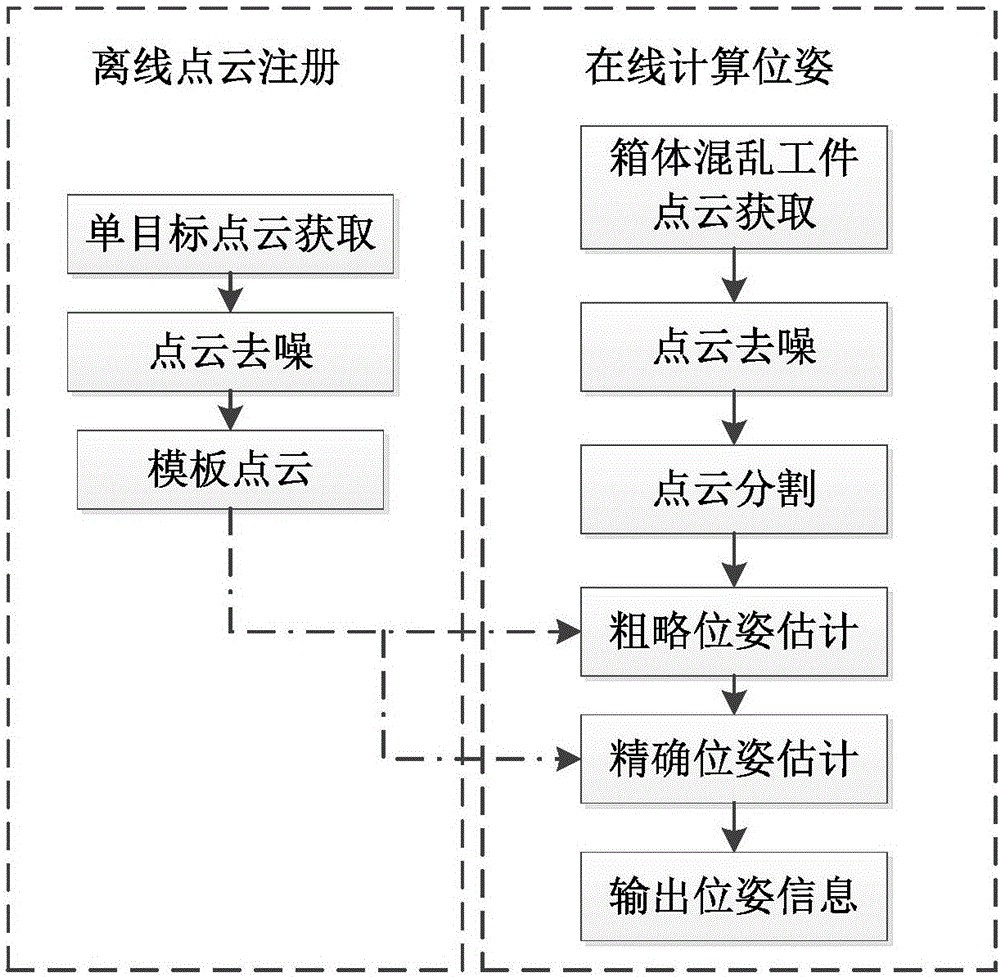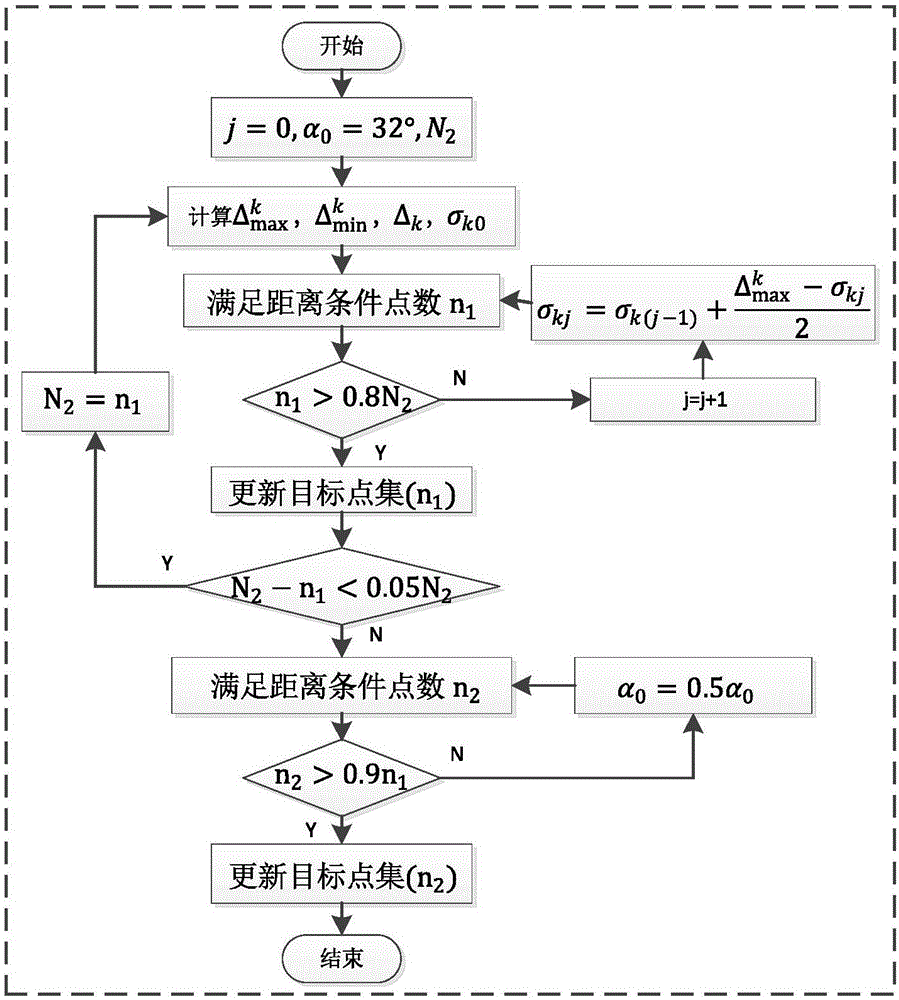Genetic algorithm and adaptive threshold constraint-combined ICP (iterative closest point) pose positioning technology
A technology of adaptive threshold and genetic algorithm, applied in the direction of genetic law, calculation, image data processing, etc., can solve problems such as limited scope of application
- Summary
- Abstract
- Description
- Claims
- Application Information
AI Technical Summary
Problems solved by technology
Method used
Image
Examples
Embodiment Construction
[0018] In order to make the object, technical solution and advantages of the present invention clearer, the present invention will be further described in detail below in conjunction with specific embodiments and with reference to the accompanying drawings.
[0019] The present invention preprocesses the initial point cloud to obtain a single-workpiece point cloud without noise, thereby performing rapid pose positioning on the chaotic box workpiece. The entire algorithm flow is mainly composed of point cloud denoising, point cloud segmentation, point cloud screening, Rough pose matching, precise pose positioning, etc.
[0020] Further, the specific implementation steps are:
[0021] (1) Use statistical filtering method to remove outlier noise. The statistical filtering formula is:
[0022]
[0023] Among them, p is the outlier point that needs to be filtered out, and p i Indicates the i-th outlier point that meets the conditions, Represents the Euclidean distance betwe...
PUM
 Login to View More
Login to View More Abstract
Description
Claims
Application Information
 Login to View More
Login to View More - R&D
- Intellectual Property
- Life Sciences
- Materials
- Tech Scout
- Unparalleled Data Quality
- Higher Quality Content
- 60% Fewer Hallucinations
Browse by: Latest US Patents, China's latest patents, Technical Efficacy Thesaurus, Application Domain, Technology Topic, Popular Technical Reports.
© 2025 PatSnap. All rights reserved.Legal|Privacy policy|Modern Slavery Act Transparency Statement|Sitemap|About US| Contact US: help@patsnap.com



